Being Thankful Out Loud
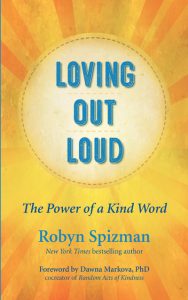 An excerpt from Loving Out Loud by Robyn Spizman
An excerpt from Loving Out Loud by Robyn Spizman
While it can be easy to feel like it is impossible to make a positive difference in these divisive times, the new book Loving Out Loud: The Power of a Kind Word by New York Times bestselling author Robyn Spizman promises that our words can go a long way in that regard, especially when we share them out loud.
Loving Out Loud offers readers creative ideas and practical insights for cultivating kindness in their lives while connecting more deeply with the world around them. The book is divided into chapters that provide readers with powerful ways for raising kinder children; loving their significant others, family, and friends; and valuing teachers, coworkers, and everyone in between. We hope you will enjoy this excerpt from the book.
# # #
Since I haven’t thanked you yet today, let me do so now. I realize you could be doing any number of things at this very second, but you chose to read this article. For that I am truly grateful.
Having a mindful, kind attitude can change our view of life. I like to think of it as being a kindness “influencer,” as with social media. Imagine together starting a Loving Out Loud (LOL) campaign of caring about each other. Watch what happens when you share an attitude of gratitude in your world and show appreciation to others out loud — it’s electric and kinetic!
Albert Schweitzer summed up gratitude when he said, “Often…our own light goes out, and is rekindled by some experience we go through with a fellow-man. Thus we have each of us cause to think with deep gratitude of those who have lighted the flame within us.”
When we appreciate someone and become that spark, a thank-you becomes a gift and lights us up. We all have so many people to thank. How we thank someone becomes part of our signature style of kindness. Studies continue to prove that the more we do for others, the happier we feel. There is a direct correlation. Cultivating kindness is a wonderful opportunity to uplift others as well as ourselves. When we turn our attention to noticing what we are grateful for, we bring out the best in ourselves.
If you stop and think of all the people you know who deserve a thank-you, you’ll be surprised to see just how many have an impact on your day, along with your life.
How a Thank-You Can Brighten Your Life
There are days when we all feel down or blue. A thank-you “out loud” is a really nice way I know to shift a mood. It can begin with the power of a simple hello, showing your genuine delight and lift up another person, including yourself.
A kindhearted hello leads to friendships, new contacts, relationships, and more. You are not just breaking the ice but are igniting an opportunity when you take the risk to connect with another person and reach out first, sharing positive words or an observation. You create the possibility of making a new friend. In return, you are also seen as friendly, outgoing, considerate, engaging, complimentary, and interested. These good traits contribute to making a wonderful first impression.
Be Thankful Out Loud
The words thank you are universal in their ability to spread good feelings. It’s clear that when we thank the people who touched our lives in little as well as powerful ways, we celebrate a part of life that validates each other.
Think for a moment:
- Who has helped you along the way in your lifetime?
- Who wrote recommendation letters on your behalf?
- Who took the time to teach you to ride a bike, read a book, play an instrument, hit a home run, play tennis, or cook a special recipe?
- Who makes your life easier or has come to your rescue?
- Is there someone who has been there for you through thick and thin?
- Do you practice saying “thank you”?
Every day there are opportunities around you, and when you seize them out loud, you build and increase your LOL radar. When you see someone in uniform who has served the country or provides safety or a public service, get in the habit of saying, “Thank you for your service.” Here are some other ideas.
Make a Thank-You Date
A friend recently reminded me how special it is to thank others out loud with a scheduled “thank you” date or get-together. Every year, she takes her babysitters out for a thank-you lunch dedicated to expressing her appreciation. It makes her kids’ caregivers feel special, and they make new friends at these dates, since they have so much in common. Whether it’s a lunch to thank a teacher, breakfast to thank Grandma for driving car pool, a mother-daughter walk at the park, or a dinner with a friend who volunteered to help you, thank-you dates are memorable and a tradition worth establishing.
Having written about the topic of thanks, love, and kindness for decades, I’ve discovered many clever ways to say “thank you,” some that don’t even use those words. For example, I loved it when a younger gentleman gave a handshake to an elderly coworker and said, “I want to shake the hand of the nicest person I’ve ever had the pleasure to work with. You are one generous soul.”
I continue to marvel at all thank-yous that make us feel appreciated, but some hit it right out of the park. I’ll never forget one I received that made me smile from ear to ear. It has stuck with me over the years as among the most touching thank-yous ever to warm my heart.
I sent a holiday gift to a friend of mine’s daughter. As she opened it, her parents videotaped her reaction and sent me the thank-you video capturing her excitement. Her joy in unwrapping her present was off the charts. That was one gift that kept on giving joy!
# # #
 Robyn Spizman is the author of Loving Out Loud. She is an award-winning, New York Times bestselling author and popular keynote speaker who has appeared in the media for over three decades, including NBC’s Today show more than thirty times. She lives in Atlanta. Visit her online at http://www.robynspizman.com.
Robyn Spizman is the author of Loving Out Loud. She is an award-winning, New York Times bestselling author and popular keynote speaker who has appeared in the media for over three decades, including NBC’s Today show more than thirty times. She lives in Atlanta. Visit her online at http://www.robynspizman.com.
Excerpted from the book Loving Out Loud. Copyright ©2019 by Robyn Spizman. Printed with permission from New World Library — www.newworldlibrary.com.










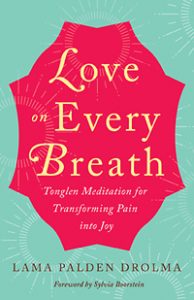 An excerpt from LOVE ON EVERY BREATH by Lama Palden Drolma
An excerpt from LOVE ON EVERY BREATH by Lama Palden Drolma Lama Palden Drolma is the author of Love on Every Breath. A licensed psychotherapist, spiritual teacher, and coach, she has studied Buddhism in the Himalayas with some of the most preeminent Tibetan masters of the twentieth century. Following a traditional three-year retreat under his guidance, Kalu Rinpoche authorized her to become one of the first Western lamas. She subsequently founded the Sukhasiddhi Foundation, a Tibetan Buddhist teaching center in Fairfax, California. Visit her online at
Lama Palden Drolma is the author of Love on Every Breath. A licensed psychotherapist, spiritual teacher, and coach, she has studied Buddhism in the Himalayas with some of the most preeminent Tibetan masters of the twentieth century. Following a traditional three-year retreat under his guidance, Kalu Rinpoche authorized her to become one of the first Western lamas. She subsequently founded the Sukhasiddhi Foundation, a Tibetan Buddhist teaching center in Fairfax, California. Visit her online at 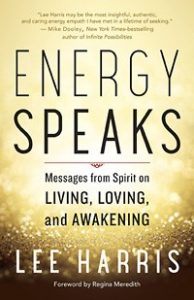
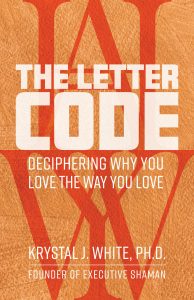 An excerpt taking from The Letter Code:
An excerpt taking from The Letter Code: 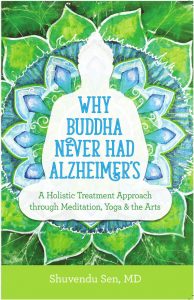 Guest post by Dr. Sen
Guest post by Dr. Sen Shuvendu Sen, MD, is Director, Medical education, and Associate Program Director, Internal Medicine Residency Program at Raritan Bay Medical Center, Meridian Hackensack University. Dr. Sen has been named to America’s Best Physicians, as well as many national and regional awards for received the Oscar E. Edwards Award from the American College of Physicians, as well as many national and regional awards for research, teaching, and community contribution.
Shuvendu Sen, MD, is Director, Medical education, and Associate Program Director, Internal Medicine Residency Program at Raritan Bay Medical Center, Meridian Hackensack University. Dr. Sen has been named to America’s Best Physicians, as well as many national and regional awards for received the Oscar E. Edwards Award from the American College of Physicians, as well as many national and regional awards for research, teaching, and community contribution.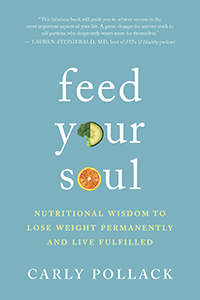 There are countless diets, cleanses, and 30-day challenges all geared to help people lose weight, heal their digestion, and feel more energy. Yet, these temporary protocols fall short when it comes to true transformation. With all of the nutrition guidance available, why do millions of people weigh more than they want and feel anxious and depressed about it?
There are countless diets, cleanses, and 30-day challenges all geared to help people lose weight, heal their digestion, and feel more energy. Yet, these temporary protocols fall short when it comes to true transformation. With all of the nutrition guidance available, why do millions of people weigh more than they want and feel anxious and depressed about it? Carly Pollack is the author of Feed Your Soul and is the founder of Nutritional Wisdom, a thriving private practice based in Austin, Texas. A Certified Clinical Nutritionist with a master’s degree in holistic nutrition, Carly has been awarded Best Nutritionist in Austin five years running and has helped over 10,000 people achieve their health and happiness goals. Visit her online at www.carlypollack.com
Carly Pollack is the author of Feed Your Soul and is the founder of Nutritional Wisdom, a thriving private practice based in Austin, Texas. A Certified Clinical Nutritionist with a master’s degree in holistic nutrition, Carly has been awarded Best Nutritionist in Austin five years running and has helped over 10,000 people achieve their health and happiness goals. Visit her online at www.carlypollack.com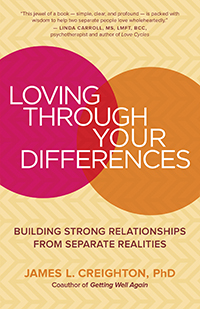 An excerpt from Loving through Your Differences by James L. Creighton, PhD
An excerpt from Loving through Your Differences by James L. Creighton, PhD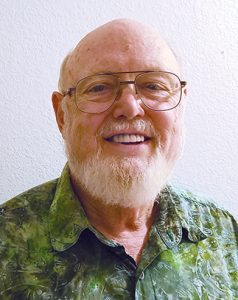 James L. Creighton, PhD, is the author of Loving through Your Differences and several other books. He has worked with couples and conducted communications training for nearly 50 years around the world. Visit him online at www.jameslcreighton.com.
James L. Creighton, PhD, is the author of Loving through Your Differences and several other books. He has worked with couples and conducted communications training for nearly 50 years around the world. Visit him online at www.jameslcreighton.com. By: Dalma Heyn & Richard Marek, authors of How to Fall in Love
By: Dalma Heyn & Richard Marek, authors of How to Fall in Love ABOUT AUTHORS DALMA HEYN & RICHARD MAREK:
ABOUT AUTHORS DALMA HEYN & RICHARD MAREK: